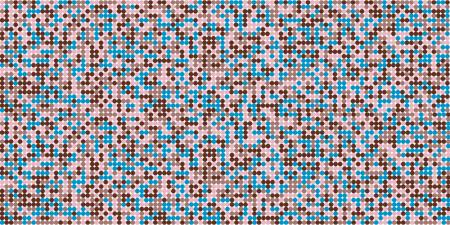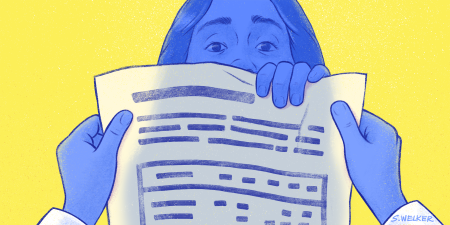Abstract
A series titled BRAINEATERS includes abstracted self-portraits of different media. The portraits consider an artist’s experiences of diagnosis, routine magnetic resonance imaging, and ongoing demands to reorient herself to her future with an invisible illness.
Figure 1. MRI (#6), 2019

Media
Charcoal on paper, 60" x 27".
Caption
I was diagnosed with multiple sclerosis (MS) at age 19. For a long time after my diagnosis, I felt anger, fear, and sadness towards my body. This experience prompted me to dissociate my self from my body. The series BRAINEATERS started with an impulse to spread awareness about MS. I quickly realized that these drawings were a way to help me connect with the invisible part of myself and allowed me to accept my body and my illness.
I obtained all copies of my imaging and captured stills. I then flipped and repeated these images, creating more complexity from the single saved image, and made an increasingly abstracted self-portrait reference. I then created these drawings photo-realistically, using a grid from the reference.
Figure 2. Another Round, 2020

Media
Photo lithography on newsprint, 20" x 11".
Caption
Life with MS means regular encounters with clinicians and regular MRIs. During this project, I focused on my own MRIs as a means by which MS is rendered visible to me and to those who can help me. This is one in an edition of 12 prints, which illustrate the repetitiveness of monitoring my body and its mysteries. These prints were made by photo-realistically drawing this image in charcoal on paper. I then transferred this image to a photo lithography plate and began printing this series.
Figure 3. Monotony, 2019

Media
Charcoal on paper, 36" x 13".
Caption
This drawing was made from a photo I took of my medications strewn on a surface. I then drew the image in charcoal photo-realistically, based on a gridded reference. When my physician delivered the news to me that I will live with MS for the rest of my life, I felt the weight of the word forever. My experiences of feeling overwhelmed by uncompromising and invasive changes were immediate. One of these changes involved choosing which, if any, disease-modifying therapy (DMT) was right for me. This drawing represents one full week of DMT that I was taking when creating BRAINEATERS. This illness demanded—and will forever demand—that I reckon with the emotional work of making high-stakes health decisions: balancing prospective risks and benefits and consenting, refusing, and choosing treatments will be ceaseless.



